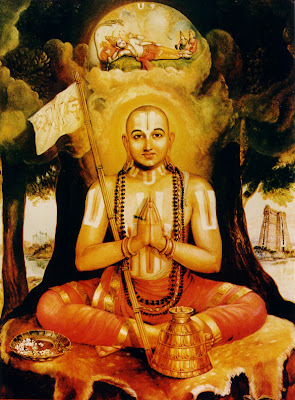

Hinduism was influenced by Buddhism and Jainism , two religions that were born in India during the period 400 BC to 100 AD . Both of these also believed in the Law of Karma , the eternal cycle of life , reincarnation , the importance of Dharma etc .
Temple building, in honour of different hindu deities , began between the 2nd and 5th centuries AD , the devotees being encouraged by the Puranas and the Agamas . However , the Vedic culture also survived . Hinduism also was influenced by the dravidian people of india and their cultural and religious beliefs .
Temples were initially built of wood and brick , but later the preferred material became stone , for permanence , to last for eternity . Temple architecture evolved into different styles in different regions of India , and within regions, continued to change and evolve with ruling dynasties that patronised them.
In the 8th century ,the celebrated Hindu Saint and Guru Adi Sankara was born in Kerala but traversed the length of India , reforming hindu customs ,traditions , temples etc . He also composed and wrote extensively in sanskrit , and his philosophic interpretation of the scriptures is called Advaita ( monoism ) ( ie God is the only reality who encompasses everything ). He defeated all his scholar opponents in debates , and set up four Maths or seats of religious learning and authority in the four corners of India . He visited the ancient Sharada Temple at Shardi in Kashmir , ( Sharada being the Goddess of wisdom , knowledge and learning ) , and having proved his complete mastery over all knowledge , ascended the Sarvajna Pitha or Throne of transcendental Wisdom , inside the Temple .
In the 12th century another great scholar, saint and reformer was born in Tamilnadu in south India , Asuri Ramanuja .
Ramanuja also travelled the length of India and went to Kashmir to get a copy of the Brahma Sutra Bhashya of sage Bodhayana . He also wrote and composed extensively ,defeated all rival scholars of his time in debate , and his interpretation of the scriptures is called Vishistadvaita or qualified monoism , laying more stress on Bhakti or devotion to god . All subsequent bhakti traditions that evolved in India that presided over the future evolution of the Sanathana Dharma , trace their origins back to Ramanuja .
A third great scholar and philosopher came in the 13th century from present day karnataka in the south namely Madhvacharya . He preached Dvaita or dualism , ie that God and the individual souls had different identities for all time .
Temple building, in honour of different hindu deities , began between the 2nd and 5th centuries AD , the devotees being encouraged by the Puranas and the Agamas . However , the Vedic culture also survived . Hinduism also was influenced by the dravidian people of india and their cultural and religious beliefs .
Temples were initially built of wood and brick , but later the preferred material became stone , for permanence , to last for eternity . Temple architecture evolved into different styles in different regions of India , and within regions, continued to change and evolve with ruling dynasties that patronised them.
In the 8th century ,the celebrated Hindu Saint and Guru Adi Sankara was born in Kerala but traversed the length of India , reforming hindu customs ,traditions , temples etc . He also composed and wrote extensively in sanskrit , and his philosophic interpretation of the scriptures is called Advaita ( monoism ) ( ie God is the only reality who encompasses everything ). He defeated all his scholar opponents in debates , and set up four Maths or seats of religious learning and authority in the four corners of India . He visited the ancient Sharada Temple at Shardi in Kashmir , ( Sharada being the Goddess of wisdom , knowledge and learning ) , and having proved his complete mastery over all knowledge , ascended the Sarvajna Pitha or Throne of transcendental Wisdom , inside the Temple .
In the 12th century another great scholar, saint and reformer was born in Tamilnadu in south India , Asuri Ramanuja .
Ramanuja also travelled the length of India and went to Kashmir to get a copy of the Brahma Sutra Bhashya of sage Bodhayana . He also wrote and composed extensively ,defeated all rival scholars of his time in debate , and his interpretation of the scriptures is called Vishistadvaita or qualified monoism , laying more stress on Bhakti or devotion to god . All subsequent bhakti traditions that evolved in India that presided over the future evolution of the Sanathana Dharma , trace their origins back to Ramanuja .
A third great scholar and philosopher came in the 13th century from present day karnataka in the south namely Madhvacharya . He preached Dvaita or dualism , ie that God and the individual souls had different identities for all time .
No comments:
Post a Comment